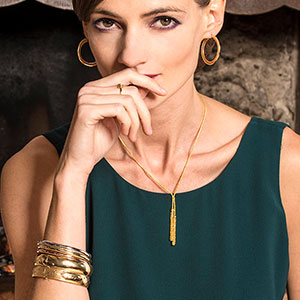
From ancient Egypt to the California Gold Rush, no metal is as intertwined in our shared human history as gold. While gold has adorned everything from ships to buildings, its history has long been synonymous with money. A quick look back in time: Before World War II, the gold standard was a system where all countries in the world fixed the value of their currencies to a specific amount of gold. After the war ended, the Bretton Woods system established that the price of gold was fixed to the U.S. dollar. President Richard Nixon ended the Bretton Woods system in 1971, establishing gold’s price at $35 per ounce—and since then gold has been freely traded, with prices going up and down more often than the sun. In 1980, it soared to $850 per ounce. Jump forward to this decade and gold prices reached $1,900 per ounce in 2011, only to level off to between $1,200 and $1,400 today.
Royal Chain, a New York City gold chain– and finished jewelry–maker celebrating its 40th anniversary this year, knows the ups and downs firsthand. To weather the crash in 2007, the company ventured into silver and other alternative metals. The price spike of gold in 2011 caused many customers’ interest in buying gold to wane, and many sold off their gold pieces, says creative director and designer Phillip Gabriel Maroof (for whom Royal Chain’s Phillip Gavriel brand is named). Now, the pendulum has begun to swing back: “We’re hearing from our independent retailers that people are buying gold chains and gold earrings,” he says. “Younger people are asking their parents for a piece of gold, a heritage piece that their parents used to have.”
While gold is experiencing a healthy renaissance, the majority of the metal’s sales are roaring back to yellow gold. Customers seem to be nostalgic for the ’80s and ’90s, explains Maroof, when people were stacking and layering piles of gold chains, long and short. At the same time, consumers are increasingly buying pieces of gold for its value, taking a cue from countries like India where gold jewelry sales have always been considered investments. “People are wanting a piece of gold that lasts forever—as opposed to buying fashion jewelry that looks like something they’d throw out in a few years,” Maroof says.
Royal Chain has been seeing demand for everything from simple hoop earrings and cute charms to geometric pieces and bold chunky bracelets at its roster of independent and major retailers across the country. The gold basketweave cuffs, latticework-style chains, fanciful hoop and simple teardrop earrings, heart pendants, and friendship knot bracelets shown here have been particularly successful sellers for the company. The majority of Royal Chain’s collections are made from 14k gold, so price points are moderate, starting at under $150. That said, a customer can opt for higher-priced pieces featuring diamonds for up to $5,000.
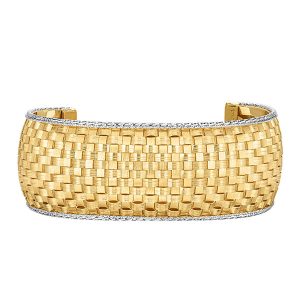
AUYWBG1926 – Phillip Gavriel 14k gold basketweave cuff, $3,075
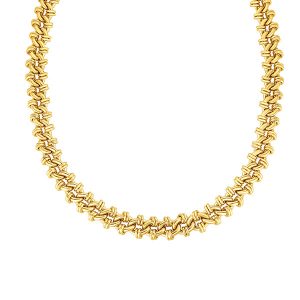
AUNCK2709 – 14k yellow gold polished Heritage Link necklace, $5,199
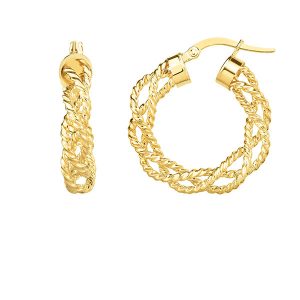
ER5715 – 14k yellow gold braided cable hoop earrings, $325
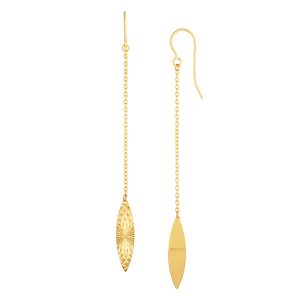
ER6194 – 14k yellow gold long shoulder-duster drop earrings, $125
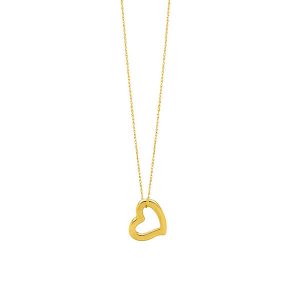
N290 – 14k yellow gold heart pendant, $150
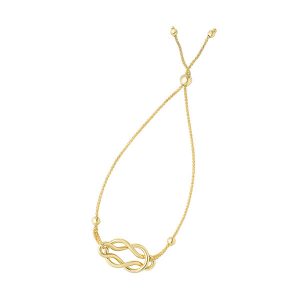
N4217 – 14k yellow gold Knot friendship bracelet, $285
To capitalize on the renewed demand for gold, Royal Chain is investing in new technologies including 3-D printing, which has the ability to create substantial pieces that are at once lightweight and moderately priced. To honor and celebrate the company’s anniversary and pay tribute to Royal Chain’s humble beginnings as a distributor of Italian gold, the company will unveil its heretofore silver-focused Phillip Gavriel collections in gold.
To learn more about Royal Chain, please visit royalchain.com or call 800-622-0960 and request a complimentary catalog.
Note: Prices are based on a 2.2 markup.